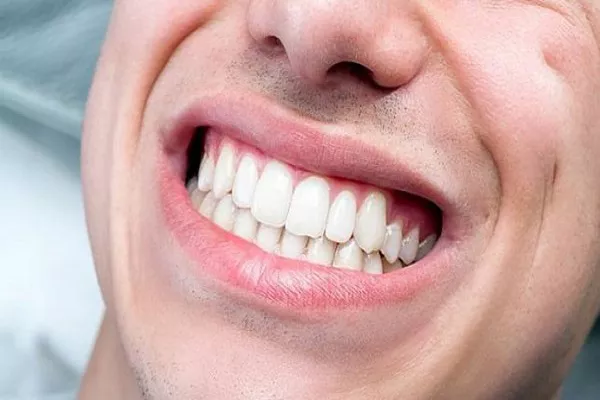Gingivitis, the initial stage of gum disease, is a common and treatable condition. This essay explores the treatment landscape for gingivitis, delving into the various strategies and interventions available to individuals seeking to address and resolve this oral health concern.
Understanding Gingivitis: A Call to Action
The journey to treating gingivitis begins with understanding its nature and the factors that contribute to its development. Gingivitis arises from the accumulation of plaque—a sticky film of bacteria—on the teeth and gums. Ineffective oral hygiene practices and certain risk factors, such as smoking, medical conditions, hormonal changes, and genetic predisposition, play a role in the onset of gingivitis. Recognizing the early signs, including redness, swelling, and bleeding of the gums, serves as a call to action for individuals to seek treatment.
Essential Oral Hygiene Practices: The Foundation of Treatment
The foundation of gingivitis treatment lies in adopting and consistently practicing essential oral hygiene measures. Regular and thorough brushing with a soft-bristled toothbrush and fluoride toothpaste is fundamental. Focusing on the gumline during brushing helps remove plaque in areas prone to accumulation. Daily flossing addresses interdental spaces and the gumline, preventing plaque buildup and contributing to the treatment of gingivitis.
Antimicrobial or antiseptic mouthwashes, containing ingredients like chlorhexidine or cetylpyridinium chloride, play a supportive role in gingivitis treatment. These mouthwashes can aid in reducing the bacterial load in the oral cavity, complementing the mechanical removal of plaque through brushing and flossing. Consistent adherence to these essential oral hygiene practices forms the basis for treating gingivitis effectively.
Professional Cleanings: A Crucial Step in Gingivitis Treatment
While individual oral care practices are pivotal, professional cleanings by dental hygienists are a crucial step in the treatment of gingivitis. These cleanings go beyond routine home care, providing a thorough removal of plaque and tartar buildup that may be challenging to address independently.
Scaling, a process of removing plaque and tartar from the tooth surfaces, and root planing, which smoothens the tooth roots to discourage further plaque accumulation, are integral components of professional cleanings. The combination of these techniques addresses the early signs of gingivitis and prevents its progression, laying the groundwork for successful treatment.
Regular dental check-ups facilitate the scheduling of professional cleanings, ensuring that individuals receive timely interventions in their gingivitis treatment journey. These check-ups also offer opportunities for personalized guidance on oral hygiene practices tailored to individual needs, enhancing the effectiveness of treatment.
Lifestyle Adjustments: Supporting Gingivitis Treatment
Treatment for gingivitis extends beyond oral care practices to encompass lifestyle adjustments that contribute to overall gum health. Smoking and tobacco use, recognized as significant risk factors for gum disease, demand cessation for comprehensive treatment. Quitting smoking not only benefits oral health but also supports the success of gingivitis treatment by removing a key contributor to inflammation and plaque buildup.
Dietary considerations become integral to gingivitis treatment. Adopting a balanced diet rich in fruits, vegetables, whole grains, and lean proteins provides essential nutrients that support gum health. Limiting the consumption of sugary foods and beverages reduces the fuel for bacterial plaque production, aiding in the success of gingivitis treatment.
Staying hydrated through regular water consumption contributes to gingivitis treatment by promoting saliva production. Saliva serves as a natural defense mechanism, helping neutralize acids and rinse away food particles, creating an environment less conducive to plaque formation.
Medical Considerations: Addressing Underlying Factors in Gingivitis Treatment
In cases where systemic factors contribute to gingivitis, addressing underlying medical conditions becomes a crucial aspect of treatment. Conditions such as diabetes, hormonal imbalances, or immune system disorders can impact gum health, influencing the severity and persistence of gingivitis.
Managing systemic conditions in collaboration with healthcare professionals becomes integral to successful gingivitis treatment. Coordinating care between oral health and medical professionals ensures a comprehensive approach, addressing both the symptoms and the underlying factors contributing to gingivitis.
Personalized Treatment Plans: Tailoring Strategies for Success
Gingivitis treatment is not a one-size-fits-all approach. The success of treatment often lies in tailoring strategies to individual needs, risk factors, and the severity of the condition. Dental professionals play a crucial role in developing personalized treatment plans that address the unique aspects of each individual’s oral health.
Tailored advice on oral hygiene practices, dietary adjustments, and lifestyle modifications enhances the effectiveness of gingivitis treatment. Dental professionals may recommend specific oral care products, such as toothbrushes, toothpaste, or mouthwash, based on an individual’s oral health needs. The collaborative effort between individuals and dental professionals in crafting personalized treatment plans maximizes the likelihood of successful gingivitis treatment.
Gingivitis in Special Populations: Customizing Treatment Approaches
Special populations, including pregnant individuals, adolescents, and those with specific medical conditions, may require customized treatment approaches for successful management of gingivitis. Hormonal changes during pregnancy, for instance, can influence gum health, requiring tailored strategies for treatment.
For pregnant individuals, maintaining optimal oral hygiene and seeking regular dental care become crucial components of treatment. Dental professionals can provide guidance on safe oral care practices and address specific concerns related to pregnancy.
Adolescents, dealing with hormonal changes and often having orthodontic appliances, may need specialized strategies for gingivitis treatment. Education on the importance of oral hygiene and the provision of tools like interdental brushes or floss threaders for those with braces contribute to effective treatment in this population.
Individuals with specific medical conditions, such as diabetes, may face challenges in gum health. Coordinated care between dental professionals and healthcare providers ensures that treatment approaches are customized to address the unique considerations of these populations.
Home Remedies and Natural Approaches: Exploring Complementary Strategies
In addition to conventional treatments, some individuals explore home remedies and natural approaches to complement their gingivitis treatment. Saltwater rinses, for instance, can be used to soothe the gums and reduce inflammation. The antimicrobial properties of certain essential oils, such as tea tree oil, have led to their inclusion in oral care routines for some individuals.
However, it is essential to approach home remedies with caution, recognizing that scientific evidence supporting their efficacy is often limited. Consulting with dental professionals before incorporating home remedies into a treatment plan ensures that these approaches align with conventional strategies and do not pose any risks to oral health.
Monitoring and Maintenance: Sustaining Gingivitis Treatment Success
Successful gingivitis treatment extends beyond the resolution of symptoms to ongoing monitoring and maintenance. Regular dental check-ups remain a crucial component of post-treatment care. These check-ups allow dental professionals to assess the effectiveness of treatment, monitor the status of gum health, and make adjustments to the maintenance plan if necessary.
Dental professionals may recommend specific oral care products for long-term use, tailored to an individual’s ongoing needs. Continued adherence to essential oral hygiene practices, including regular and thorough brushing, flossing, and the use of mouthwash, supports the sustained success of gingivitis treatment.
Lifestyle adjustments, such as maintaining a balanced diet and avoiding tobacco use, remain important post-treatment strategies for gum health. Ongoing collaboration between individuals and dental professionals fosters a proactive approach to monitoring, ensuring that any signs of gingivitis recurrence are addressed promptly.
Conclusion: Triumphing Over Gingivitis
In conclusion, gingivitis is a treatable condition, and the journey to triumph over it involves a multi-faceted approach. From essential oral hygiene practices and professional cleanings to lifestyle adjustments, medical considerations, and personalized treatment plans, individuals have a range of tools and strategies at their disposal. The success of gingivitis treatment lies in the collaboration between individuals and dental professionals, tailoring approaches to individual needs and sustaining gum health through ongoing monitoring and maintenance. Triumphing over gingivitis is not just about resolving symptoms,it is about fostering a commitment to lifelong oral health and well-being.





























